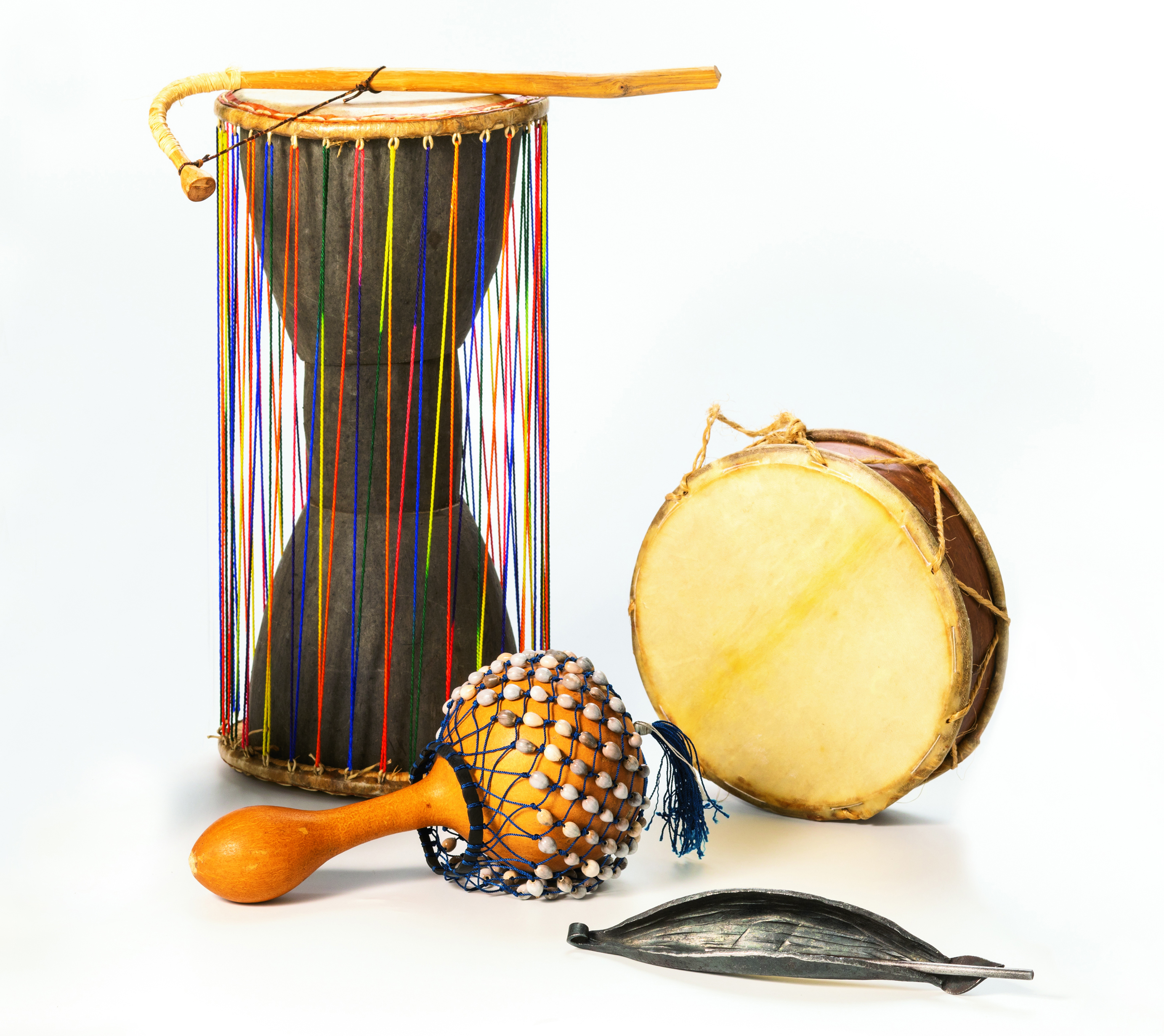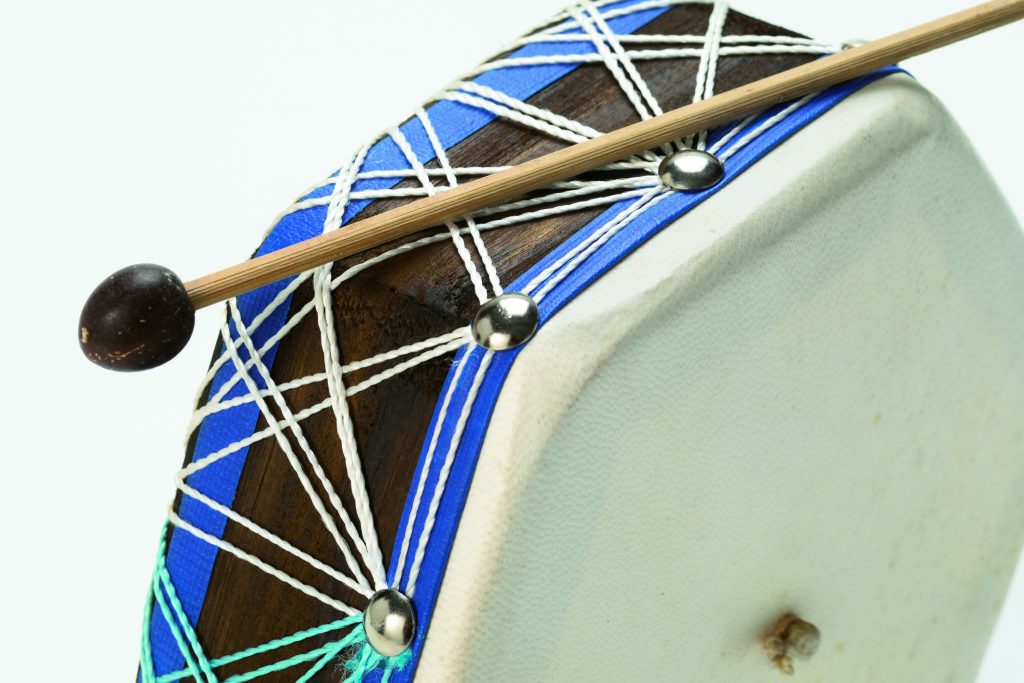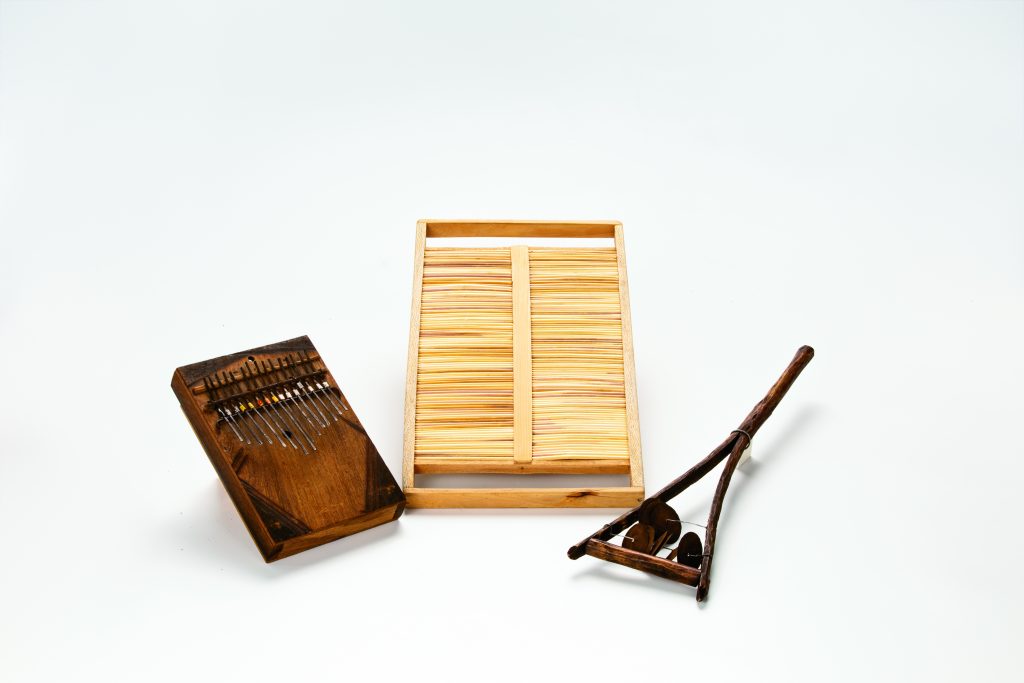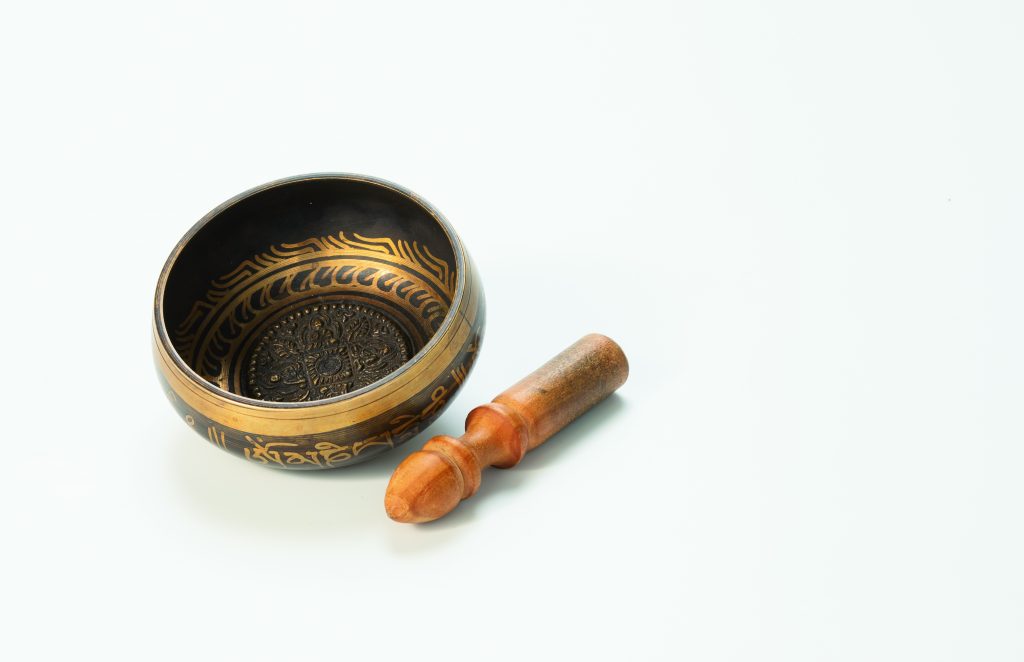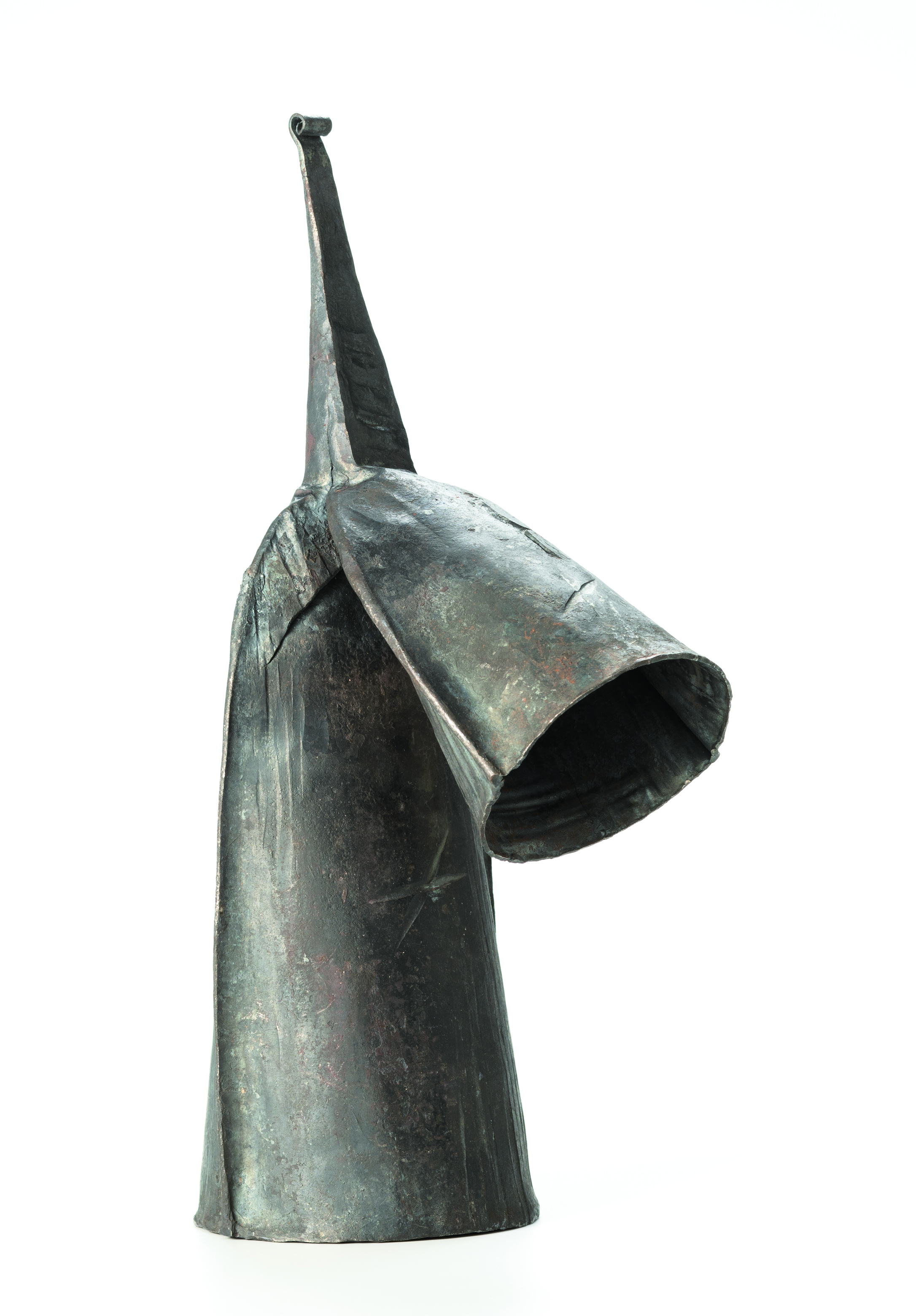
The gankogui from the Ewe people of Ghana, West Africa, is a time keeper instrument and plays a central role in many drumming traditions.
Newly tenured professor of ethnomusicology Birgitta Johnson, Ph.D., picks up a sizeable gankogui in her office at the University of South Carolina and, with a stick, taps out a syncopated rhythm — B-flat, then G, and back to B-flat — all the while touting the volume and resonance of the double-bell instrument. The gankogui came from the Ewe people of Ghana, she says in explaining its role in African music.
“In this case, bells like this in West Africa, and sometimes Central Africa, are timekeepers,” Birgitta says. “You might have 15 or 20 drums and usually one or two bells, and everyone has their ear trained on what this is doing because it’s the tempo-keeper, the pulse-keeper. The lead singer or dancer or drummer would signal something to change, and the bell would be the first one to follow to let everyone else know it’s time to do something different, to go faster, slower, or whatever.”
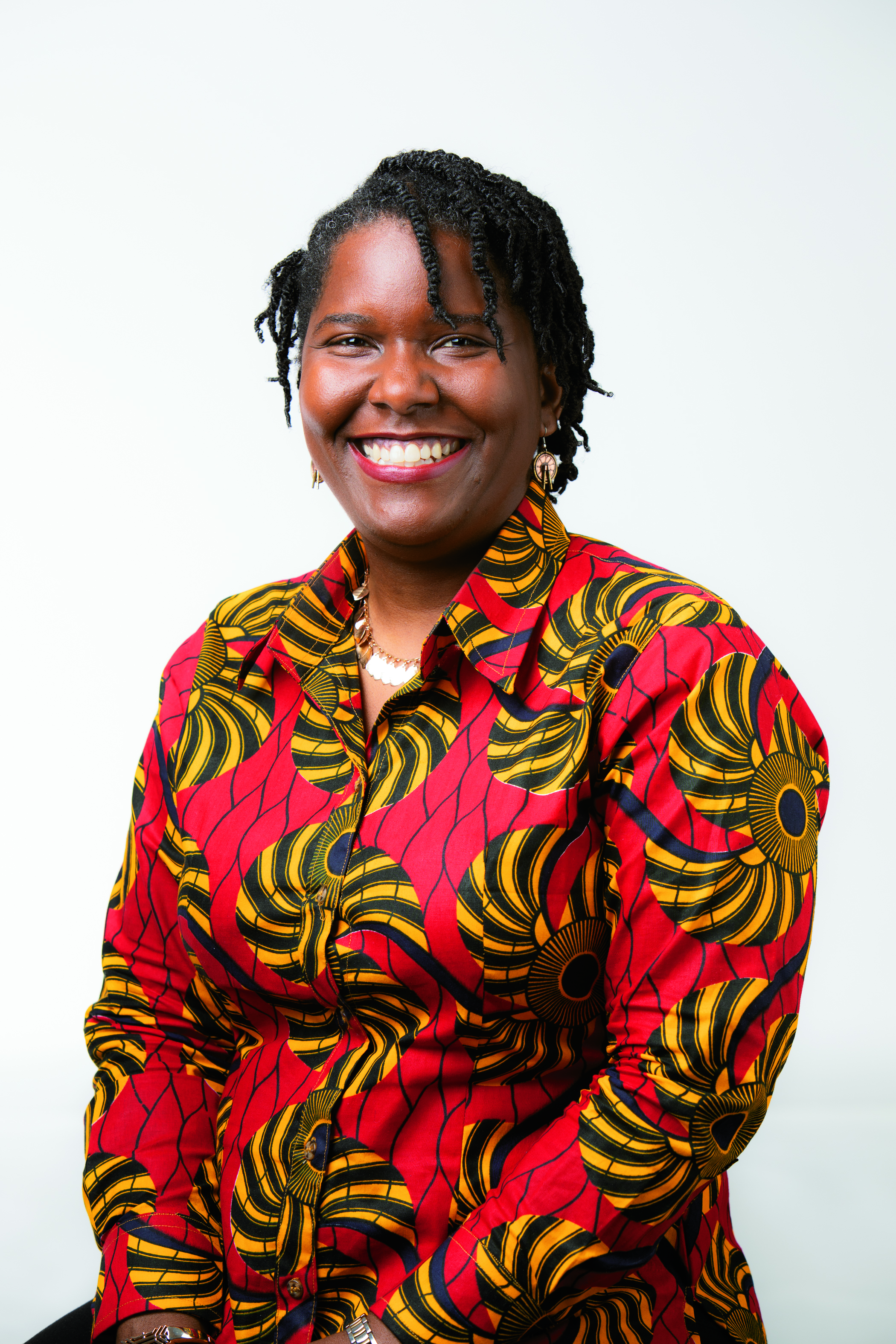
Birgitta’s enthusiasm for her instruments, and for their historical context, is contagious. As a child in Atlanta, Georgia, she began violin lessons at age 8, then piano lessons at 12, earning a bachelor’s degree in music from Agnes Scott College in Decatur, Georgia, before earning a master’s degree and doctorate from the University of California, Los Angeles. Proficient in classical music, Birgitta played a wide variety of genres in school orchestras, including many arrangements by eclectic composer David E. Robinson, III. She also played hymns on her violin at her mother’s rural home church 100 miles outside of Atlanta.
“That church was founded literally as the Civil War was ending when the land was given to a manservant by the Confederate soldier whose life he saved. My uncle was the pianist for many years, but we also sang lined hymns.”
This form of call-and-response hymnody similarly exists in some British, Scottish, and Appalachian traditions and continues to be used in Southern and rural African American churches. “Lined hymns basically come out of the preservation of 19th-century vocal music,” Birgitta says. The leader sings a line a cappella in the meter he would like it to be sung, and everyone sings it back. Unlike traditional European-style hymnody, African American lined hymns often include a heterophonic vocal aesthetic.
“What you’re hearing is very, very high voices and very, very low voices, as opposed to just three or four-part harmony. You almost have five or six-part texture with people not singing exactly together. Some come early, some come late, and some add extra notes.”
Even as she reaches for metal shakers with red frames, one from Ghana and another from Kenya, Birgitta explains that in the United States enslaved African Americans were regularly banned from drumming.
“You actually see African-American cultures transferring things like percussion to the body, with clapping and foot stomping.” In the American colonies, slave owners realized that Africans could communicate long-distance with drums, especially after the Haitian Revolution began because someone played the rhythm for the African god of war, Chango.
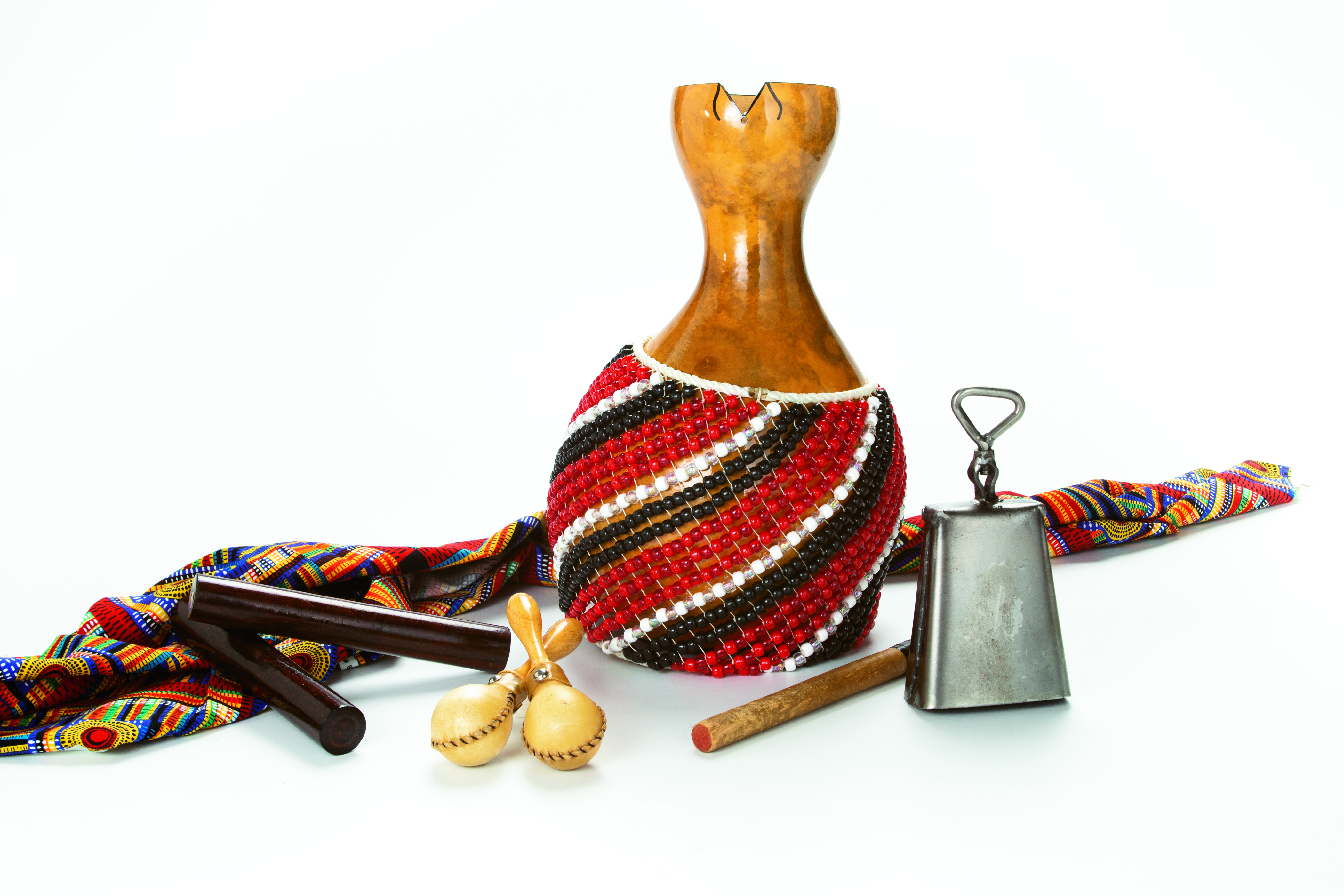
Slavery was also prevalent in Brazil, Cuba, and Jamaica, when, Birgitta says, sugar was a world currency, even more profitable than cotton or gold. Many people from the Yoruba and Congolese regions of Africa were taken to South America and the Caribbean. “Because there was a high volume of people being brought over, their African cultures were still being retained and revived,” she says. “In the American context, by the time you got to the abolitionist movement, most of the enslaved people had been born in the United States and had never known anything outside of the United States experience.” Because of this, many iterations of African music continued in Caribbean and South American genres.
Birgitta has two small kalimbas, one from Ghana and another from Tanzania. A melodic percussion instrument like the marimba or timpani, the kalimba is further classified as a lamellophone, meaning that small metal bars called lamels are used to make sounds.
“A lot of times when I talk to students about how we organize instruments from around the world, we get beyond the woodwinds, brasswinds, things like that, to a system that was developed in the early 1900s called the Hornbostel-Sachs system,” Birgitta says. Percussion instruments would fall under the categories of membranophones (sound emanating from a stretched membrane) or idiophones (self-sounders), which include struck instruments like marimbas.
The kalimba is also sometimes called a “thumb piano.” A more complex, double-rowed version of it called the mbira can play bass and melody simultaneously. The kalimba’s sound and design are simple, with metal tines arranged on a wooden soundboard.
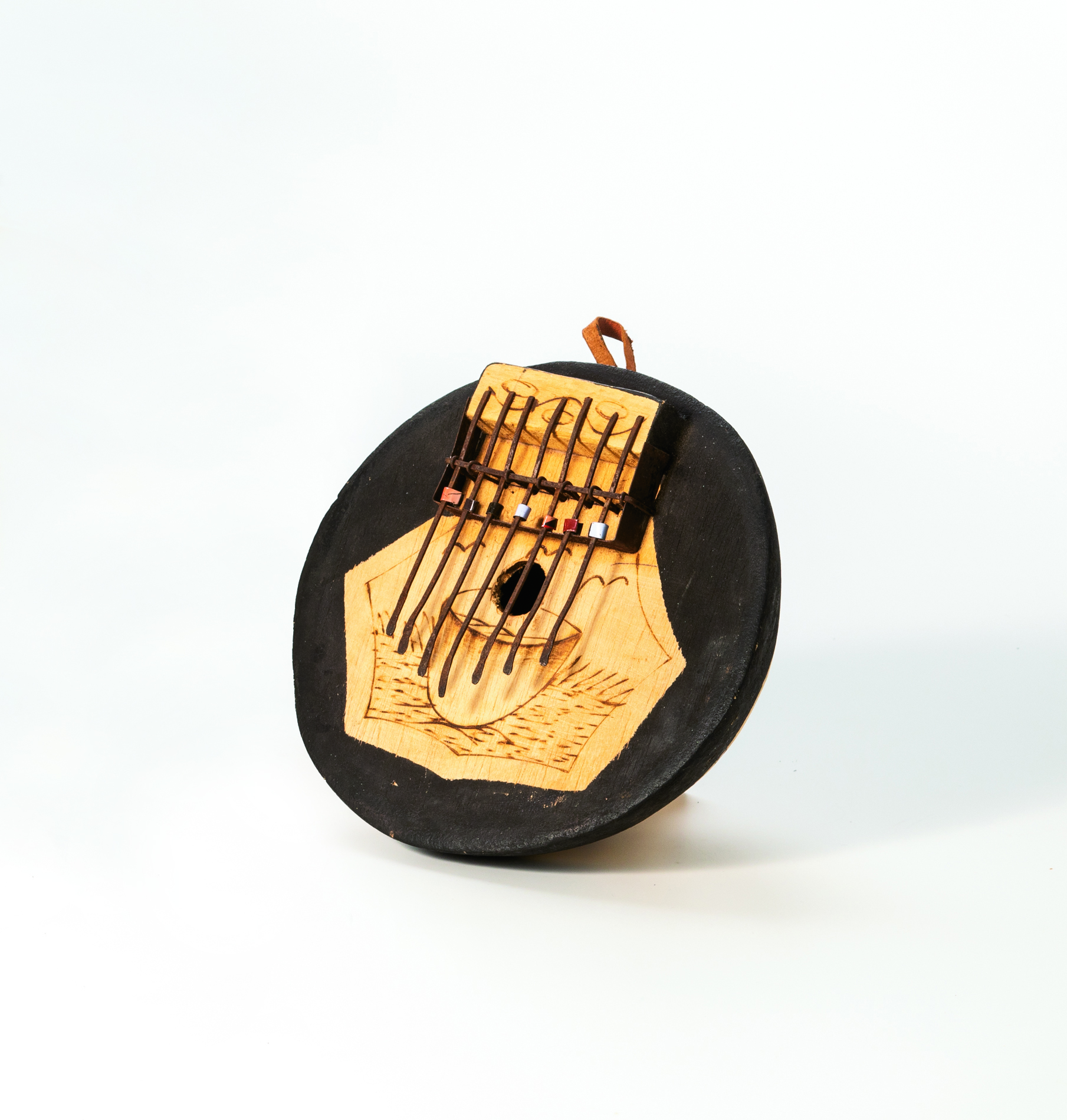
“You think about our wind-up music boxes and jewelry boxes with the little dancing ballerina on the top,” Birgitta says. “Inside that is something very similar, where you have a metal bar that has little notches on the top, and the little notches just pull on things like the little lamels on them.” As Birgitta plays the kalimba, tiny bands of metal vibrate to lend a buzzing effect to the tune. Little bits of color on the bands reveal that they came from recycled oil or sardine cans.
In many Afro-Cuban traditions, some percussion instruments are often played in trios. An example would be a battery of Cuban batá drums. “One drum is the mother, one is the baby, one is the brother or the sister,” Birgitta explains. “The instruments imitate pitches of the human voice, sung or spoken.”
She plays an example by picking up a Caribbean shekere, a percussion instrument made of a dried gourd covered with beads. She drops the gourd onto the heel of her hand, instructing her companion to play straight quarter notes on a smaller shekere, then playing a syncopated and lower sounding pattern over the quarter noteline herself. These shekere are sometimes played in a trio called güiro. When all three shekeres are played, the third middle sounding one plays a response to the call of the larger one. Güiro are mostly used in sacred settings, but also can be found in salsa and rumba music.
Birgitta’s shekeres were custom-made by Ricardo Wilkins of Cincinnati, Ohio, whose logo reads, “Mobeta.” The gourds came from California. “He sent me pictures and videos of the gourds before he beaded them,” she says, “because I wanted three distinct pitches, and I wanted them to be a match for the güiro sound.”
Another percussion instrument with a shared Brazilian and central-African origin, the cuíca, is a traditional friction drum; Birgitta’s features etchings of Brazilian landmarks, like The Christ of the Redeemer statue, Sugarloaf Mountain and its famous cable cars, and the names of famous beaches like Ipanema and Cocacabana.
“I got this one from an indigenous Brazilian craftsperson,” she says. “It actually works with pressure and water. In the case of the cuíca, it can imitate pitches. If someone is singing along, you can match their pitch or get in their key. This is still popular in Brazilian samba bands.”
Birgitta has a pair of mahogany claves from Mexico that also are a staple of salsa and rumba music. She keeps the “Made in Mexico” labels on her claves to identify them as musical instruments, in case she is traveling with them. Once, she played the claves for airport security officers who were curious about what the two brown sticks were. Ironically they had no question about the sharp metal edges of an atoke she also had in her bag. A bell from Ghana, the atoke looks like a carved leaf or an overgrown pea pod. It sits in the palm of Birgitta’s hand; after striking it with a metal rod, she mutes it by closing her fingers around it, creating the illusion that she is folding the instrument shut. Birgitta points out to her students that the atoke looks like a taco, so that they will remember what it is called.
The nature of shared musical traditions can make tracing the origin of instruments difficult. Some experts believe rainsticks, for example, came from South America, but similar instruments were independently created in both Africa and Australia. Birgitta’s rainstick is Australian, and she has a Tanzanian kayamba, a washboard-shaped shaker made from tiny reeds fitted across a wooden frame and filled with tiny beads. Its sound is calming, like that of a rainstorm.
Another instrument with a soothing tone is an Asian singing bowl that Birgitta keeps by her bed at home. She found the bronze bowl in Shanghai and chose it because of the way it fits in the palm of her hand and sings in smooth overtones. Circling the outer edge of the bowl with a mallet continuously, Birgitta says, “You’ve got to wait for the ring to happen. You can’t make it happen. You can feel it on your hand, in your fingers.”
Birgitta would like to have some crystal singing bowls, the kind that people use for sound therapy. “But they’re so fragile, and I don’t want to spend that kind of money on something that can break on me. They’re a different shape, but it’s the same concept of this traditional Chinese or East Asian, Buddhist singing bowl.” Crystal singing bowls are used in a similar manner to the bronze bowls, but they are accurately pitched to represent the colors of the seven chakras.
“Religion and spirituality and healing and health go together,” Birgitta says. “How do you settle your mind into the meditation space, particularly with sound?”
As an ethnomusicologist, Birgitta understands better than many people how important ethnic folk instruments are in the study of musical traditions across cultures. “A lot of our American pop music is pulling from African folk traditions and styles,” she says. “In the folk tradition, people hear and share things across experiences.”
